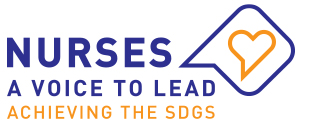Valuing Nursing Graduates, Australia
Increasing awareness of the value of graduates, and hence more sustainable graduate employment and transition, requires a strong nursing voice.
Each year thousands of new nurses graduate from Queensland universities, and embark on a precarious process of looking for employment. While the public sector is the largest employer of graduates, increasing pressure to contain costs and limited transition to more efficient models of care have seen graduates, and young people in general, bearing an unfair burden of employment insecurity and under employment.
In 2013, at the height of fiscal constraints, graduate nurse recruitment in Queensland public hospitals and health services fell to a low of approximately only one third (1,100) of nursing graduates being able to secure employment. Similar trends were, and continue to be, experienced throughout Australia. This was seemingly paradoxical as workforce planners were warning of looming nursing shortages, due to increasing demand for services, an ageing nursing workforce and high levels of nursing turnover. These problems were exacerbated in rural and remote locations and in clinical specialities. This was especially relevant in Queensland, due to its geographical size and dispersed population.
The problem was that while graduate nurses are clearly the life blood of the nursing workforce, they are vulnerable to short term fiscal constraints, and their recruitment is readily cut in response to short term budget problems. While funding is a central issue, broader recruitment issues are due to perceptions about graduates abilities and where they are seen to add value. Many services opposed the recruitment of new graduates, while simultaneously claiming high rates of nursing turnover and an inability to attract experienced staff. They claimed a fundamental lack of capacity to transition new graduates, due to a lack of experienced staff being already spread too thin.
In 2015, as part of a strong nursing policy platform, a Graduate Initiative was put in place to increase graduate employment by up to 1000 per year for four years. The Graduate Initiative worked closely with nurse recruiters and nurse educators to identify cultural expectations, explore new areas for deployment and challenge the level of support they received. Very quickly, it was evident that high graduate turnover was closely related to limited support for graduates, residual tensions about university training models and the needs of the immediate workplace dominating the broader professional nursing context.
In the first year of the Graduate Initiative, the profile of graduate nursing recruitment was raised shining a light on the underlying issues, and creating a stronger nursing voice. At the end of the first year, the numbers of graduates had risen to over 2200, with record numbers statewide.

